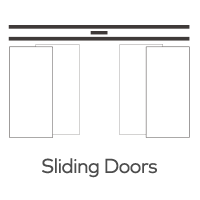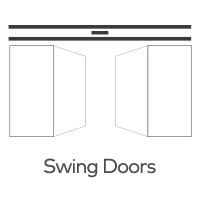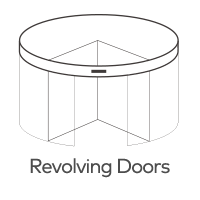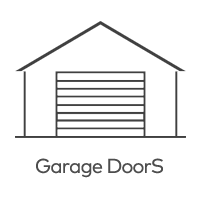How are automatic revolving door sensors calibrated and adjusted to meet specific requirements?
Automatic revolving doors have become a ubiquitous feature in modern buildings, offering both elegance and efficiency in managing the flow of people while maintaining temperature control and security. To function seamlessly, these revolving doors rely on a complex system of sensors. These sensors ensure that the door revolves smoothly and safely, all while meeting specific requirements set by the building's design and regulations. In this article, we'll delve into the intricacies of how automatic revolving door sensors are calibrated and adjusted to meet those unique specifications.

1. Types of Sensors:
Automatic revolving doors are equipped with various sensors, each serving a distinct purpose. The most common types include:
a. Motion Sensors: These sensors detect movement in the proximity of the door. They play a crucial role in initiating the door's rotation when someone approaches and stopping it when the user has passed through.
b. Safety Sensors: Safety is paramount in revolving door operation. These sensors are designed to prevent accidents by stopping or reversing the door's movement when an obstruction, such as a person or object, is detected.
c. Position Sensors: Position sensors monitor the door's current position, ensuring it aligns correctly with the doorframe. This is essential for preventing jams and ensuring a tight seal, which is especially important for energy efficiency.
d. Weight Sensors: Weight sensors gauge the load inside the door compartments to prevent overcrowding, which can lead to unbalanced rotation and safety hazards.
2. Initial Calibration:
Calibrating automatic revolving door sensors is a precise process that begins during installation. During this phase, professionals fine-tune the sensors to operate within the specified parameters, meeting the building's unique requirements. This may involve setting the door's rotation speed, sensitivity of motion detectors, and fine-tuning safety sensors.
3. Adjusting for Traffic Volume:
Once a revolving door is operational, it's crucial to adjust the sensors to accommodate the expected traffic volume. Buildings can experience varying levels of pedestrian traffic, such as rush hours in office buildings or slow periods in a retail environment. Adjusting motion sensors to react more quickly during busy periods and slow down during quieter times helps maintain smooth traffic flow.
4. Adhering to Safety Regulations:
In most regions, there are strict safety regulations in place for automatic revolving doors. These regulations often govern aspects like sensor sensitivity, stopping distance, and emergency functionality. To meet these requirements, sensors need to be calibrated accordingly. Safety sensors, in particular, must be meticulously adjusted to ensure the door stops or reverses its rotation when an obstruction is detected.
5. Fine-Tuning Energy Efficiency:
Automatic revolving doors are prized for their ability to maintain indoor climate control by limiting air infiltration. To maximize energy efficiency, position sensors play a vital role. These sensors ensure the door compartments align precisely with the doorframe, preventing air leaks. Adjustments to these sensors may be needed to guarantee a tight seal.
Periodic Maintenance:
Calibrating and adjusting automatic revolving door sensors is not a one-time job. Regular maintenance is essential to keep sensors in optimal working condition. Dust, dirt, or wear and tear can affect their performance over time. Scheduled maintenance checks help detect and address issues promptly, ensuring that the door operates as intended.
6. Technological Advancements:
As technology evolves, automatic revolving door sensors have seen significant advancements. These innovations often make calibration and adjustments more user-friendly, providing building managers with greater control and real-time data on door operation. With the advent of smart building solutions, sensors can now be remotely monitored and adjusted, further enhancing their adaptability to specific requirements.
In conclusion, the proper calibration and adjustment of automatic revolving door sensors are vital for ensuring these entrance systems meet the specific needs of a building. Whether it's regulating traffic flow, adhering to safety regulations, optimizing energy efficiency, or staying up to date with technological advancements, sensors play a crucial role in the performance of these architectural marvels. Regular maintenance and attention to sensor performance are key to a smoothly functioning, safe, and efficient automatic revolving door system in any building.







